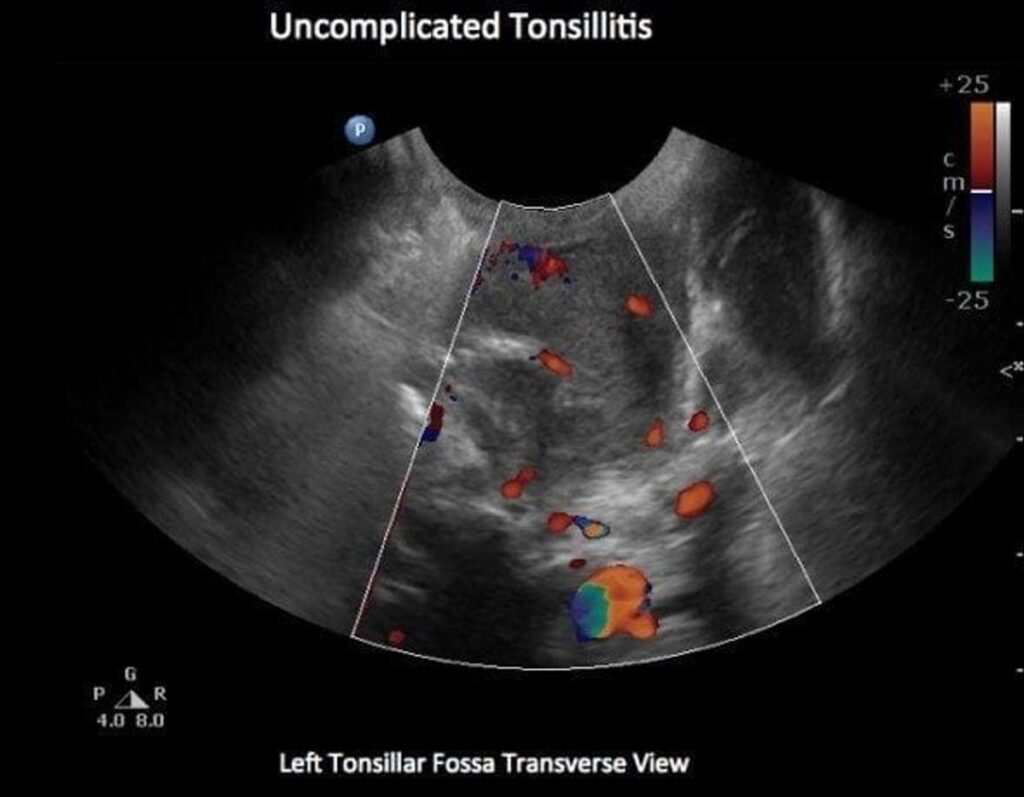Can Tonsils Grow Back After Being Removed? – Tymoff, the surgical removal of the Can Tonsils Grow Back After Being Removed? – Tymoff, is a common procedure typically performed to treat chronic infections or obstructive sleep apnea. However, there’s a curious case of tonsils making a comeback, with some patients experiencing regrowth post-surgery. This article delves into the phenomenon of tonsil regrowth, examining the clinical evidence, factors influencing its likelihood, and the implications it holds for health, repeat surgeries, and quality of life. We also explore current and future strategies to prevent and manage regrowth, and the advancements in tonsil treatment that may change the landscape of tonsillectomy.
Key Takeaways
- Tonsil regrowth after a tonsillectomy is a rare but documented occurrence, challenging the finality of the procedure.
- Clinical evidence suggests that incomplete removal of Can Tonsils Grow Back After Being Removed? – Tymoff tissue and individual biological factors contribute to the likelihood of regrowth.
- Tonsil regrowth can result in the recurrence of symptoms, potentially leading to additional surgeries and impacting the patient’s quality of life.
- Advancements in surgical techniques and post-surgical care are focused on minimizing the chances of tonsil tissue regrowth.
- Regenerative medicine and genetic research are promising fields that may offer insights into more effective and personalized Can Tonsils Grow Back After Being Removed? – Tymoff treatment options in the future.
Understanding Can Tonsils Grow Back After Being Removed? – Tymoff

What are Tonsils and Their Function?
Tonsils are a pair of soft tissue masses located at the rear of the throat. They are part of the lymphatic system and play a crucial role in the body’s immune response. Tonsils act as a first line of defense against airborne pathogens that enter through the mouth and nose.
However, their function extends beyond trapping germs; tonsils also produce antibodies to help fight infections. This immunological role is particularly important in young children whose immune systems are still developing.
Can Tonsils Grow Back After Being Removed? – Tymoff are believed to be involved in the body’s immune surveillance, especially during the early years of life when exposure to pathogens can shape immune responses.
While Can Tonsils Grow Back After Being Removed? – Tymoff are beneficial for immune function, they can become problematic if they are frequently infected or obstructive, leading to considerations for their removal.
The Tonsillectomy Procedure: How It’s Done
Tonsillectomy, the surgical removal of the Can Tonsils Grow Back After Being Removed? – Tymoff, is a common procedure performed to alleviate chronic tonsillitis, sleep apnea, and other related conditions. The surgery is typically done under general anesthesia and can be completed within 30 to 45 minutes.
The most traditional approach to tonsillectomy is the ‘cold knife (steel) dissection‘ method, where a surgeon uses a scalpel to carefully remove the Can Tonsils Grow Back After Being Removed? – Tymoff. This technique has been practiced for many years and is known for its precision.
Recovery from a Can Tonsils Grow Back After Being Removed? – Tymoff usually involves a period of sore throat and mild to moderate pain, which can be managed with pain relief medications. It’s crucial for patients to stay hydrated and rest to promote healing.
Other methods include cauterization, where heat is used to remove the tonsils and seal blood vessels, and ‘coblation’, which involves using radiofrequency energy. Each technique has its own set of advantages and considerations, which should be discussed with a healthcare provider.
Reasons for Tonsil Removal: From Chronic Infections to Sleep Apnea
Can Tonsils Grow Back After Being Removed? – Tymoff, or tonsillectomy, is a surgical procedure that is often considered when a patient experiences recurrent issues with their tonsils. The most common reason for this surgery is the presence of chronic throat infections that can lead to frequent sore throats, difficulty swallowing, and general discomfort.
Another significant reason for tonsillectomy is obstructive sleep apnea, a condition where the Can Tonsils Grow Back After Being Removed? – Tymoff are large enough to block the airway during sleep, causing breathing difficulties and disrupting sleep patterns. This can have a profound impact on overall health and well-being.
In some cases, a Can Tonsils Grow Back After Being Removed? – Tymoff is performed to treat an abscess, which is a collection of pus that can develop in the throat due to infection. This can be a painful and potentially serious condition that requires prompt medical attention.
While Can Tonsils Grow Back After Being Removed? – Tymoff is a common and generally safe procedure, it is important to understand the potential risks and benefits before making a decision. The goal is to improve the patient’s quality of life by addressing the underlying issues that necessitate the removal of the tonsils.
The Phenomenon of Tonsil Regrowth

Can Tonsils Really Grow Back?
The question of whether tonsils can regrow after a tonsillectomy is a topic of both curiosity and clinical significance. Tonsil regrowth is indeed possible, although it is relatively uncommon and typically incomplete. The regrowth of tonsillar tissue can occur when remnants of the tonsils’ lymphatic tissue are left behind after surgery.
- Incomplete removal during surgery
- The presence of residual lymphatic tissue
- The body’s natural regenerative processes
While complete regrowth is rare, partial regrowth can lead to the recurrence of tonsillar problems, necessitating further medical attention.
The likelihood of Can Tonsils Grow Back After Being Removed? – Tymoff regrowth varies from patient to patient and depends on several factors, including the surgical technique used and the individual’s healing response. Understanding these factors is crucial for healthcare providers to minimize the chances of regrowth and its associated complications.
Clinical Evidence of Tonsil Regeneration
While tonsillectomy is considered a permanent solution to various Can Tonsils Grow Back After Being Removed? – Tymoff-related health issues, there is clinical evidence suggesting that tonsils can indeed regenerate. Studies have shown that partial regrowth is possible, particularly in younger patients or when the tonsillectomy is less than complete.
- In some cases, regrowth was observed within a few months post-surgery.
- The extent of regrowth can vary, with some individuals experiencing significant tissue return.
- Not all regrowth leads to the recurrence of symptoms, but it is a possibility that requires attention.
The phenomenon of tonsil regrowth raises questions about the long-term efficacy of Can Tonsils Grow Back After Being Removed? – Tymoff and the need for careful postoperative monitoring to ensure the best outcomes for patients.
Further research is needed to understand the mechanisms behind Can Tonsils Grow Back After Being Removed? – Tymoff regeneration and to identify which patients are most at risk. This knowledge could lead to improved surgical techniques and postoperative care strategies.
Factors Influencing the Likelihood of Regrowth
The likelihood of Can Tonsils Grow Back After Being Removed? – Tymoff regrowth is not uniform across all individuals. Certain factors play a significant role in determining whether a person might experience this unusual phenomenon.
- Age at the time of surgery: Younger patients, particularly children, have a higher propensity for Can Tonsils Grow Back After Being Removed? – Tymoffregrowth. The lymphoid tissues in children are more active and have a greater capacity for regeneration.
- Surgical technique used: Incomplete removal of Can Tonsils Grow Back After Being Removed? – Tymoff tissue can lead to regrowth. The precision of the surgical method is crucial.
- Individual healing responses: Variations in immune system function and tissue healing processes can influence regrowth.
- Presence of residual tonsil tissue: Even small remnants of Can Tonsils Grow Back After Being Removed? – Tymoff tissue left behind can potentially regenerate over time.
The interplay between these factors can make the difference between a permanent resolution and the unexpected return of Can Tonsils Grow Back After Being Removed? – Tymoff tissue.
Understanding these variables is essential for both patients and healthcare providers to anticipate and manage the possibility of Can Tonsils Grow Back After Being Removed? – Tymoff regrowth effectively.
Implications of Tonsil Regrowth

Health Consequences: Recurrence of Symptoms
When Can Tonsils Grow Back After Being Removed? – Tymoff regrow after a tonsillectomy, patients may experience a return of previous symptoms. This can include sore throats, difficulty swallowing, and recurrent infections. The severity of symptoms often mirrors those that necessitated the original surgery.
- Recurrent sore throat
- Difficulty swallowing
- Frequent tonsillitis
- Sleep disturbances, including sleep apnea
The recurrence of symptoms can lead to further medical interventions, impacting the patient’s overall health and well-being.
It’s crucial for healthcare providers to monitor patients post-surgery for signs of regrowth. Early detection and management of regrowth can help mitigate health consequences and improve long-term outcomes.
The Impact on Repeat Tonsillectomy Rates
The regrowth of Can Tonsils Grow Back After Being Removed? – Tymoff can have a significant impact on the rates of repeat tonsillectomy. Patients who experience regrowth may require additional surgeries, which not only increases healthcare costs but also exposes them to further risks associated with surgical procedures.
While the overall incidence of Can Tonsils Grow Back After Being Removed? – Tymoff regrowth is relatively low, the necessity for a second surgery can be both frustrating and disheartening for patients and their families.
The following table illustrates the estimated percentage of patients who undergo a second tonsillectomy due to regrowth:
| Age Group | Estimated % of Repeat Tonsillectomy |
|---|---|
| Children | 3-6% |
| Adults | 1-3% |
It’s important to note that these rates are influenced by various factors, including the surgical technique used and the individual’s healing response. Health professionals aim to minimize the likelihood of regrowth through meticulous surgical practices and post-operative care.
Psychological and Quality of Life Considerations
The prospect of Can Tonsils Grow Back After Being Removed? – Tymoff regrowth can be a source of anxiety for patients who have previously undergone a tonsillectomy. Concerns about the return of symptoms and the potential need for additional surgery can impact mental well-being. It’s important for healthcare providers to address these worries and offer support throughout the post-operative period.
- Regular follow-up appointments
- Clear communication about symptoms to monitor
- Access to counseling or support groups if needed
The psychological impact of medical procedures is an important aspect of patient care that should not be overlooked. Ensuring that patients feel heard and supported can significantly improve their quality of life.
Patients who experience Can Tonsils Grow Back After Being Removed? – Tymoff regrowth may also face practical challenges, such as missed work or school and the financial burden of further treatment. These factors can contribute to a decreased quality of life and should be considered when discussing the possibility of regrowth with patients.
Preventing and Managing Can Tonsils Grow Back After Being Removed? – Tymoff

Surgical Techniques to Minimize Regrowth
To prevent the recurrence of Can Tonsils Grow Back After Being Removed? – Tymoff tissue after a tonsillectomy, surgeons employ various techniques that aim to reduce the likelihood of regrowth. One of the most effective strategies is ensuring the complete removal of tonsil tissue during the initial surgery. This meticulous approach can significantly diminish the chances of any residual tissue proliferating.
- Coblation ablation: A minimally invasive method utilizing radiofrequency energy to eradicate regrown tissue.
- Electrocauterization: Applying electric current to remove tissue and seal blood vessels, which may also hinder regrowth.
- Partial tonsillectomy: Also known as tonsillotomy, this involves removing only a portion of the tonsil, which can be beneficial for certain patients.
By adopting these surgical techniques, healthcare professionals aim to provide a long-term solution for patients, minimizing the need for further interventions and the associated risks and discomfort.
Post-Surgical Care and Monitoring
After a tonsillectomy, careful monitoring and appropriate post-surgical care are crucial to ensure a smooth recovery and to minimize the chances of Can Tonsils Grow Back After Being Removed? – Tymoff regrowth. Patients are typically advised to rest at home for several days, avoiding strenuous activities and environments that may increase the risk of infection.
- Rest at home for a few days post-surgery
- Avoid crowded places to reduce infection risk
- Refrain from strenuous activities
It is essential for patients to follow a specific care regimen that includes adequate hydration, pain management, and dietary adjustments to promote healing.
Regular follow-ups with the healthcare provider are important to track the healing process and to identify any signs of regrowth early. Patients should be aware of the symptoms that may indicate regrowth, such as recurring sore throats or difficulty swallowing, and report them to their doctor promptly.
Alternative Treatments and Preventative Measures
In the quest to prevent tonsil regrowth, patients and healthcare providers alike turn to alternative treatments and preventative measures. Good oral hygiene practices are paramount; brushing and flossing daily, along with rinsing the mouth after meals, can help maintain a healthy environment in the throat and potentially ward off issues related to tonsil tissue.
Dietary changes are also recommended as part of a holistic approach to tonsil health. A balanced diet rich in vitamins and minerals supports the immune system and may reduce the likelihood of tonsil problems.
In addition to personal care routines, some individuals explore natural remedies and supplements that claim to support throat health. While scientific evidence for many of these remedies is limited, they remain popular among those seeking non-surgical options. Below is a list of common preventative strategies:
- Regular gargling with saltwater
- Consumption of anti-inflammatory foods
- Use of herbal throat sprays
- Avoidance of irritants such as smoke and pollution
Future Directions in Tonsil Treatment

Advancements in Tonsillectomy Methods
As medical technology progresses, tonsillectomy methods continue to evolve with a focus on reducing pain and improving recovery times. New techniques aim to minimize tissue trauma during the procedure, which can lead to better outcomes and less postoperative discomfort.
- Coblation tonsillectomy uses radiofrequency energy to remove tonsil tissue at lower temperatures, resulting in less postoperative pain.
- Intracapsular tonsillectomy, also known as partial tonsillectomy, leaves a thin layer of tonsil tissue, which can reduce pain and bleeding.
- Laser tonsillectomy employs a focused light beam to cut tissue and cauterize blood vessels simultaneously, offering a precise and less invasive option.
The goal of these advancements is not only to make the surgery safer and more effective but also to enhance the patient’s comfort during the recovery phase.
These innovations are particularly significant in light of the fact that tonsillectomy, total removal of the tonsils, causes moderate to severe pain lasting several days postoperatively. As such, the medical community continues to seek methods that can alleviate this aspect of the patient’s experience.
Regenerative Medicine and Tonsil Tissue Engineering
The intersection of regenerative medicine and tonsil health presents a promising frontier for those who have undergone tonsillectomy. Tissue engineering techniques are being explored to potentially enable the regeneration of tonsil tissue, which could revolutionize the way we approach tonsil-related ailments.
The application of stem cell therapy in regenerative medicine has opened new avenues for research into tonsil tissue engineering. This approach aims to harness the body’s own healing mechanisms to repair or replace damaged tissues.
Current research is focusing on the identification and use of specific stem cells that could be instrumental in tonsil regeneration. These cells have the unique ability to differentiate into various cell types, offering a beacon of hope for patients who might benefit from tonsil tissue reconstruction.
- Identification of stem cell types
- Understanding stem cell differentiation
- Potential for tonsil tissue reconstruction
While the clinical application of these techniques is still in its infancy, the implications for future tonsillectomy patients could be significant, potentially reducing the need for repeat surgeries and improving overall throat health.
The Role of Genetics in Tonsil Health and Surgery Outcomes
Recent studies have begun to unravel the complex relationship between genetics and tonsil health, suggesting that genetic factors may play a role in the predisposition to tonsillar diseases and the outcomes of tonsil surgeries. The discovery of genetic markers linked to tonsil size and immune response could revolutionize the approach to tonsillectomy, potentially leading to more personalized treatments.
- Genetic predisposition to larger tonsil size may increase the risk of obstructive sleep apnea.
- Variations in immune system genes could explain why some individuals are more prone to recurrent tonsillitis.
- Understanding genetic profiles may help predict the success of tonsillectomy and the likelihood of regrowth.
The exploration of genetic influences is not only crucial for improving surgical outcomes but also for developing targeted therapies that could reduce the need for surgery altogether.
Further research into the genetic underpinnings of tonsil health is essential, as it holds the promise of enhancing patient care through more tailored surgical interventions and post-operative management strategies.
Conclusion
In summary, the possibility of tonsil regrowth after removal is a topic that intertwines medical curiosity with practical implications. While tonsillectomy is a common procedure, the potential for tonsils to make a comeback is not widely recognized. Research indicates that partial regrowth can occur, particularly when remnants of tonsillar tissue remain post-surgery. However, complete regrowth is rare and typically does not result in the return of previous tonsillar issues. Understanding the factors that contribute to tonsil regrowth, such as age and the surgical technique used, can help in managing expectations and guiding post-operative care. As we continue to explore the regenerative capabilities of the human body, the tonsils serve as a fascinating case study in the resilience and adaptability of our biological systems.
Frequently Asked Questions
Can tonsils grow back after being removed?
Yes, in some cases, tonsils can partially regrow after a tonsillectomy, especially if some tonsillar tissue is left behind.
What is a tonsillectomy and why is it performed?
A tonsillectomy is a surgical procedure to remove the tonsils, typically performed to treat chronic infections or obstructive conditions like sleep apnea.
What are the signs that tonsils might be regrowing?
Signs of tonsil regrowth include the reappearance of throat discomfort, swelling, and symptoms similar to those experienced before the original tonsillectomy.
How common is tonsil regrowth after removal?
Tonsil regrowth is relatively uncommon, but the exact incidence rate can vary depending on surgical techniques and individual patient factors.
Can tonsil regrowth lead to the need for another tonsillectomy?
In some cases, if the regrown tonsils cause significant symptoms or health issues, a second tonsillectomy might be considered.
Are there ways to prevent tonsils from regrowing after surgery?
Complete removal of tonsillar tissue during the initial surgery can minimize the chances of regrowth, along with careful post-surgical monitoring and alternative treatments.
Read Also: PESO DA REGUAへの特価ツアー情報 *







